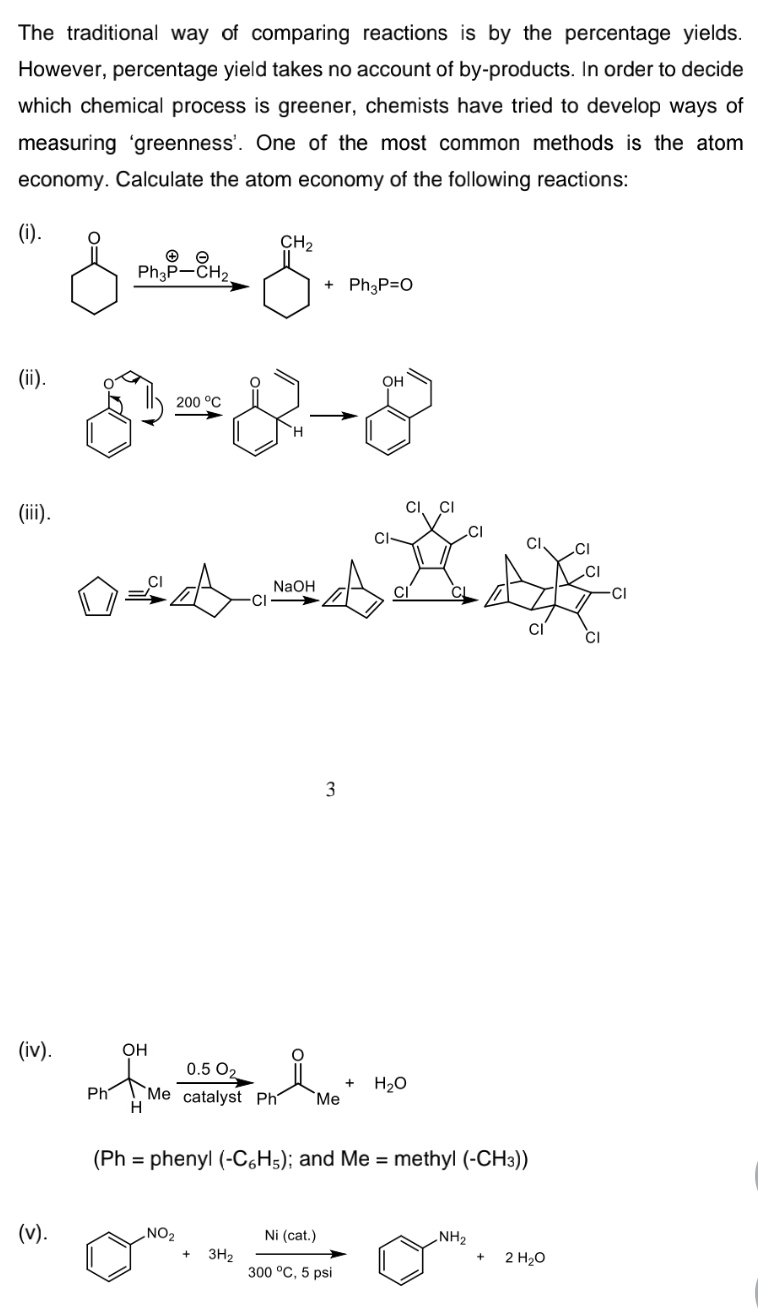The traditional way of comparing reactions is by the percentage yields. However, percentage yield takes no account of by-products. In order to decide which chemical process is greener, chemists have tried to develop ways of measuring 'greenness'. One of the most common methods is the atom economy. Calculate the atom economy of the following reactions: (i). CH2 Ph3P-CH2. Ph3P=0 (ii). OH 200 °C (ii). CI CI NAOH CI CI CI (iv). он 0.5 O2 H20 Ph Me catalyst Ph Me (Ph = phenyl (-C6H5); and Me = methyl (-CH3)) (v). NO2 Ni (cat.) NH2 3H2 300 °C, 5 psi 2 H20
Thermochemistry
Thermochemistry can be considered as a branch of thermodynamics that deals with the connections between warmth, work, and various types of energy, formed because of different synthetic and actual cycles. Thermochemistry describes the energy changes that occur as a result of reactions or chemical changes in a substance.
Exergonic Reaction
The term exergonic is derived from the Greek word in which ‘ergon’ means work and exergonic means ‘work outside’. Exergonic reactions releases work energy. Exergonic reactions are different from exothermic reactions, the one that releases only heat energy during the course of the reaction. So, exothermic reaction is one type of exergonic reaction. Exergonic reaction releases work energy in different forms like heat, light or sound. For example, a glow stick releases light making that an exergonic reaction and not an exothermic reaction since no heat is released. Even endothermic reactions at very high temperature are exergonic.
Kindly answer this question

Trending now
This is a popular solution!
Step by step
Solved in 3 steps with 3 images








